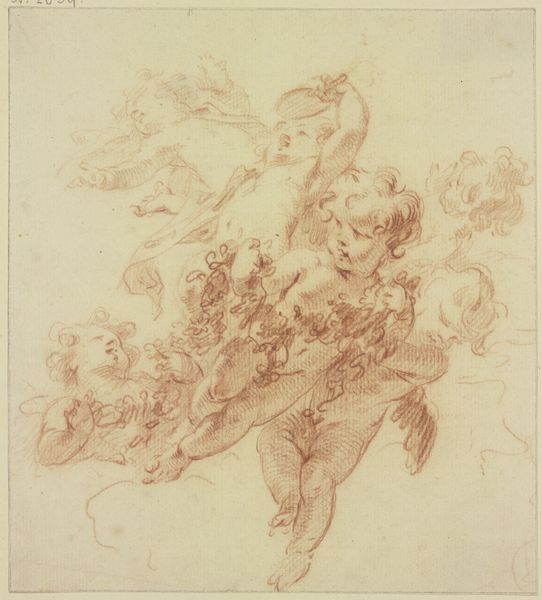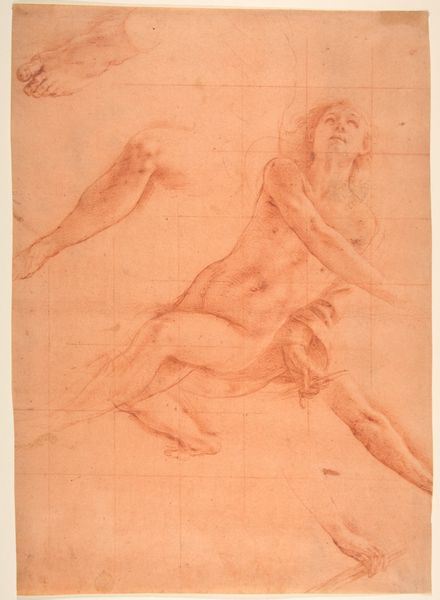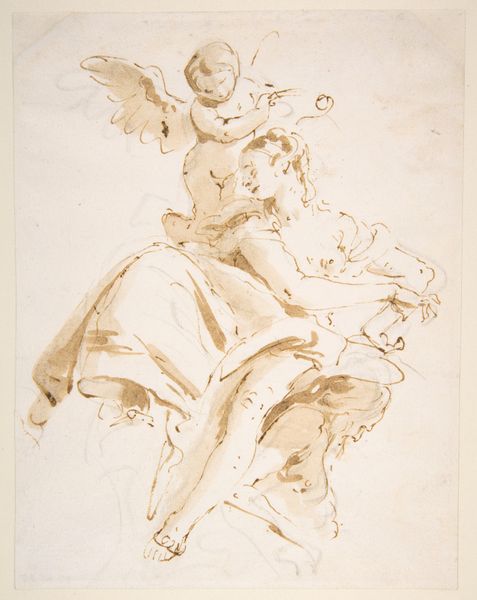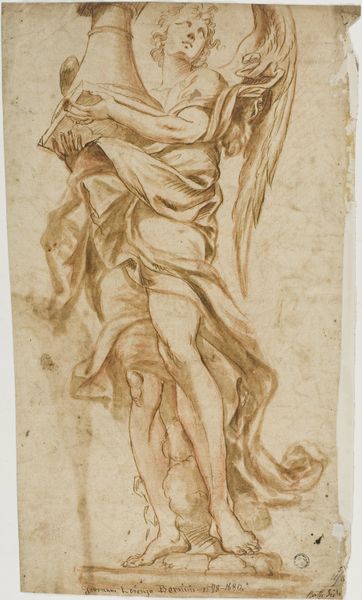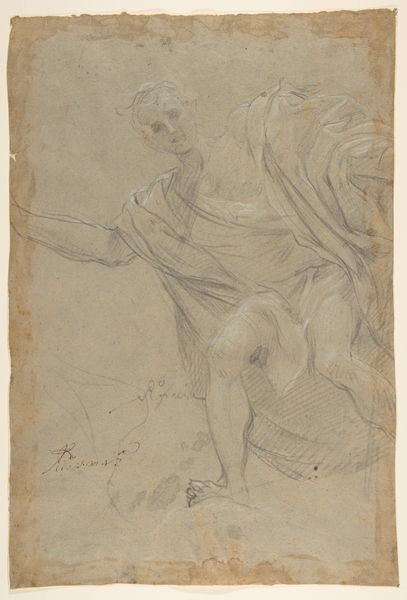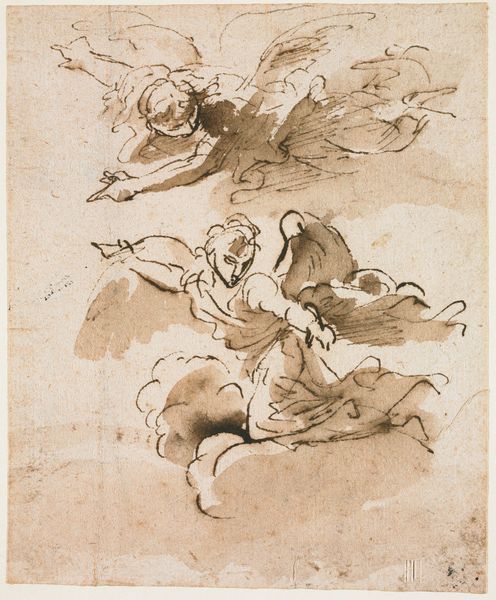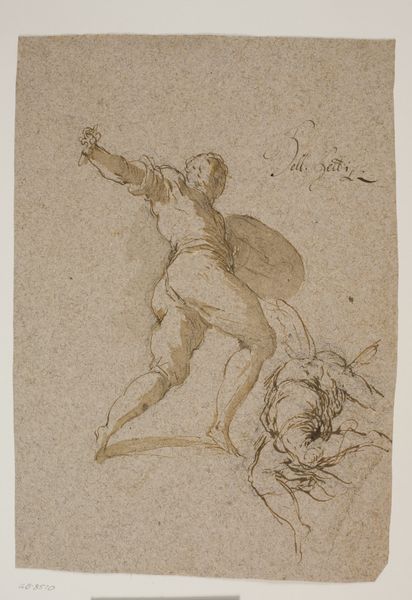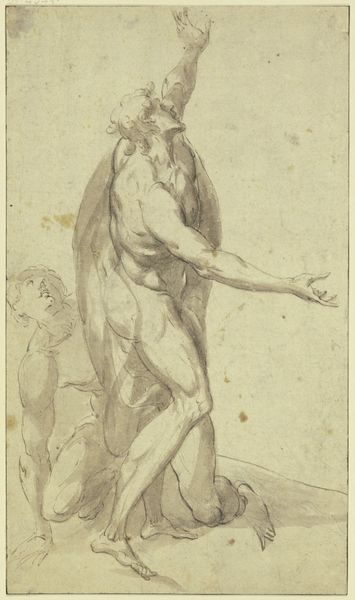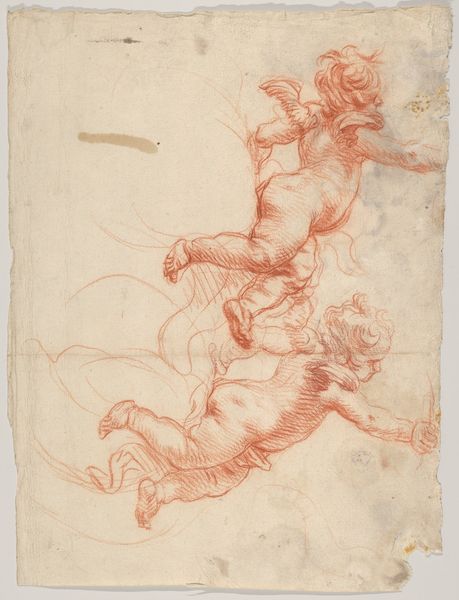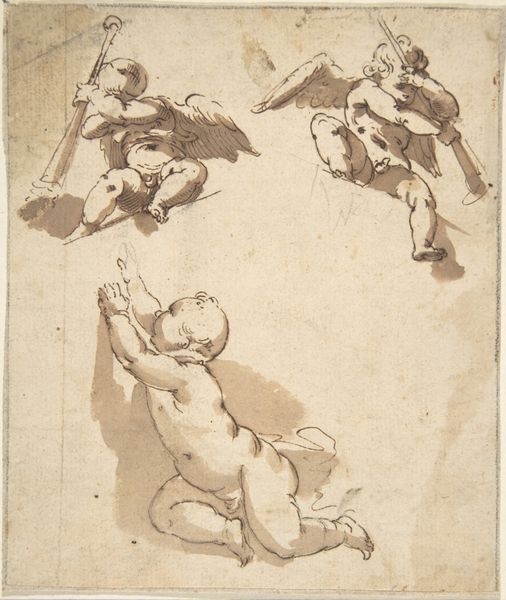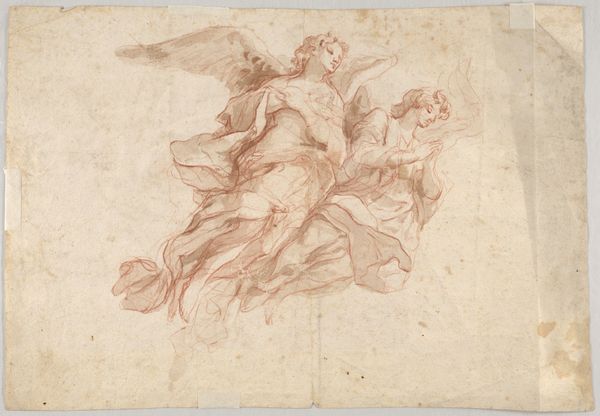
drawing, print, ink
#
drawing
#
baroque
#
ink painting
# print
#
figuration
#
ink
#
watercolor
#
angel
Dimensions: sheet: 9 13/16 x 8 9/16 in. (24.9 x 21.8 cm)
Copyright: Public Domain
Curator: Cosmas Damian Asam's drawing, "An Angel holding a Lily," created sometime between 1706 and 1739. It’s an ink and watercolor rendering. My first impression is ethereal; the delicate lines create a sense of weightlessness, like a fleeting vision. What stands out to you? Editor: The use of sepia ink strikes me immediately. The materiality here—the paper, likely handmade, the way it absorbs the ink wash, the quick, confident strokes – speaks to a culture of rapid production and consumption of religious imagery during that period. Think about the workshops churning these out! Curator: Indeed. The lily is, of course, a traditional symbol of purity, innocence, and often associated with the Virgin Mary. Its presence underscores the angel's role as a divine messenger, a conduit between heaven and earth. The gaze directed upwards towards the divine hints at a spiritual message or command. Editor: And that flowing drapery! I wonder about the labor involved. Were these preparatory sketches, or presentation drawings meant for sale? Who was employing these workshops? The Baroque loved display, loved overwhelming the senses—it took an immense infrastructure of labor to pull that off. The paper, the ink— all meticulously produced through trade. Curator: That’s an interesting point, thinking about its consumption. Baroque art does lend itself to awe, to be sure. Symbolically, the angel figure, so popular throughout this period, acted as a protector and intercessor, speaking to both anxieties and spiritual hopes. I keep wondering about the missing narrative… Is this angel from an Annunciation scene? Is there another element or figure originally present? Editor: I agree. We can't disregard these objects' existence as physical commodities, either. Think of how far raw materials traveled; consider the artisanal knowledge embedded in creating each sheet. That linen rag was likely handled by numerous laborers before it became something Asam worked on. Curator: You remind me of the global supply lines then at play in Europe! I also cannot help think about the lasting impact of symbols, how this specific rendering of an angel continues to shape cultural imaginations. Editor: And those inks— how much labor and trade went into preparing those colors. Fascinating to consider this drawing through the lens of material culture. Curator: A wonderful thought that brings together art history with history in all its vast scope. Thank you.
Comments
No comments
Be the first to comment and join the conversation on the ultimate creative platform.
